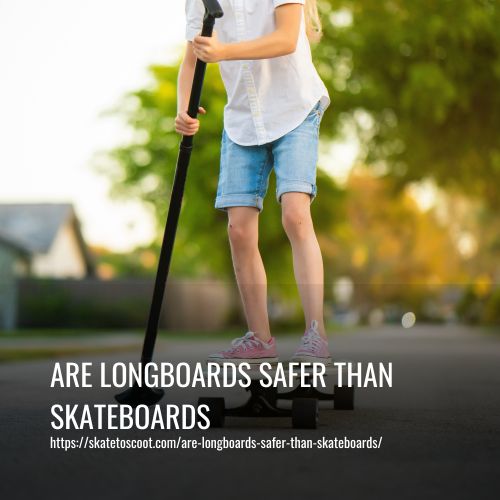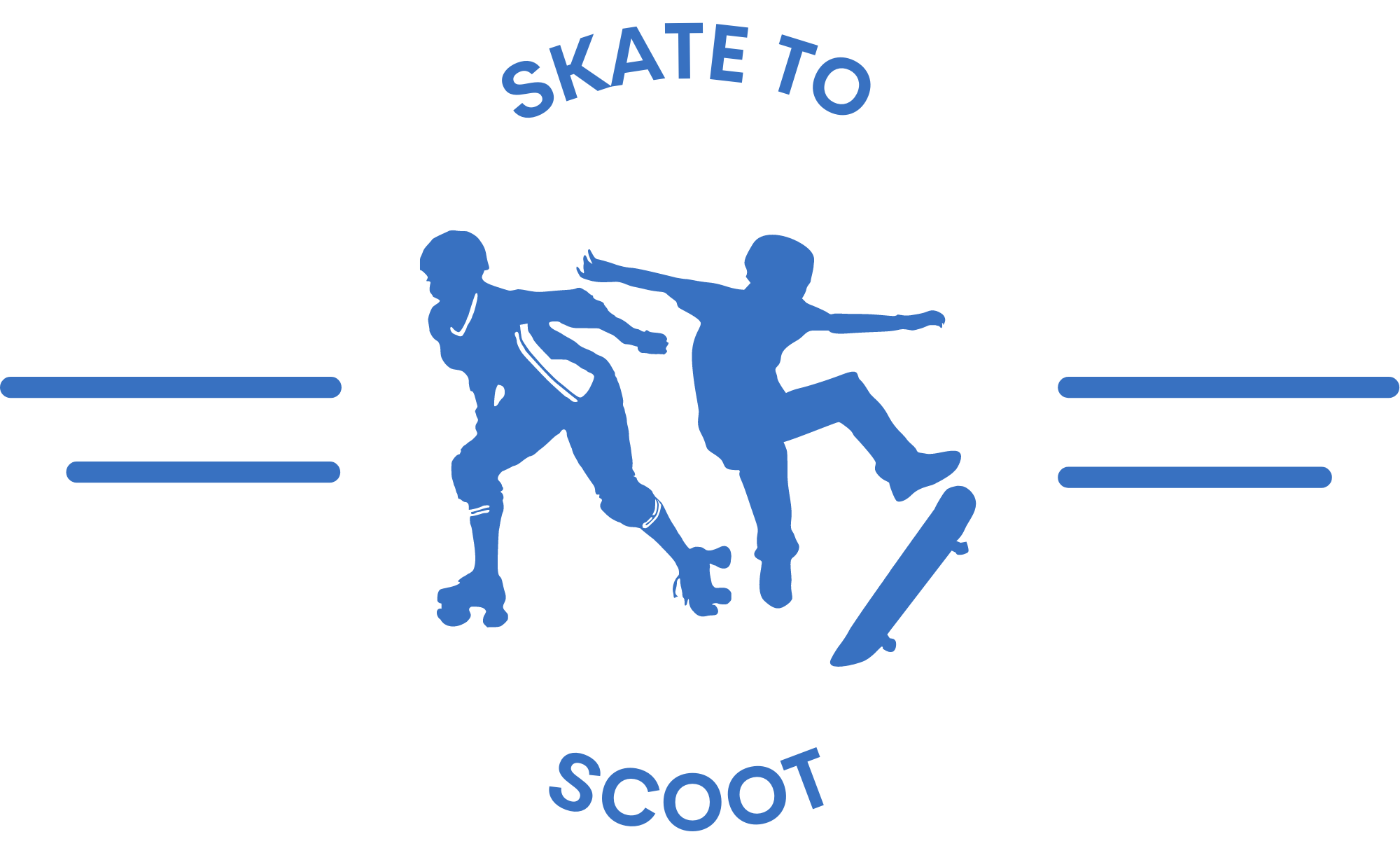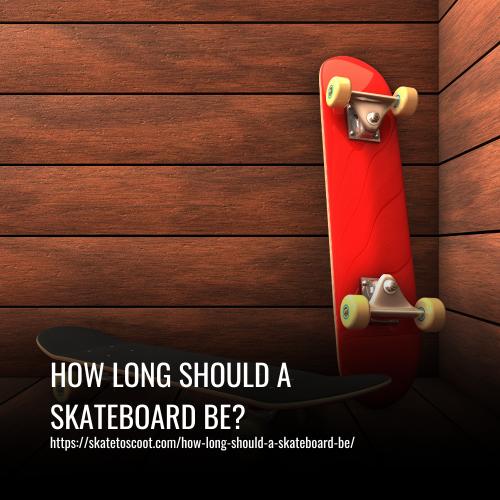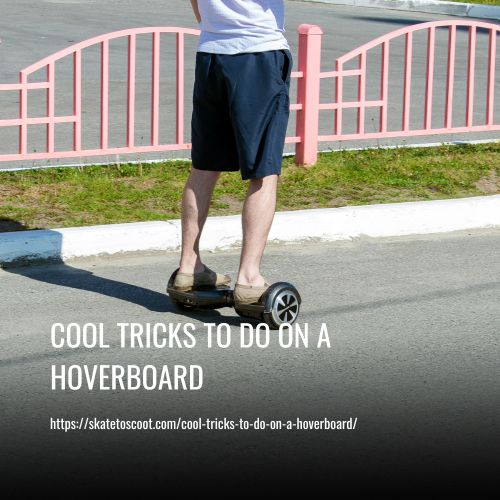As an Amazon Associate we earn from qualifying purchases.
When it comes to safety, skateboarding is generally considered safer than longboarding. Longboarding carries a higher risk of severe head injuries such as fractures, traumatic brain injury, and intracranial hemorrhage compared to skateboarding.
To minimize the risk of injury while skateboarding or longboarding, it is crucial to wear appropriate protective gear, such as helmets, elbow and knee pads, and wrist guards. These safety measures can greatly reduce the chances of sustaining serious injuries.

How Does Riding Style Affect Safety?
Riding style is a crucial factor that significantly affects the safety of both longboarding and skateboarding. The style of riding determines the type of terrain and tricks performed, which in turn influence the potential risks and safety considerations.
One popular riding style is cruising, which involves leisurely rides on flat ground or smooth surfaces. Cruising is commonly associated with longboarding due to its stable and comfortable ride. Riders who engage in cruising are less likely to encounter obstacles or perform high-risk maneuvers, making it a relatively safer style of riding.
Freestyle riding, on the other hand, is more common among skateboarders. It involves executing various tricks, such as ollies, kickflips, and grinds, typically on skate park features and urban landscapes. This style of riding requires a higher level of skill and agility, making it inherently riskier compared to cruising. Skateboarders performing tricks must consider their speed, balance, and spatial awareness to avoid potential injuries.
Downhill riding is yet another riding style that presents unique safety considerations. This high-speed style involves riding down steep hills or mountains, often on longboards specifically designed for stability at high velocities. Downhill riders must have excellent control, balance, and the ability to anticipate obstacles to mitigate the increased risks associated with high speeds.
Protective Gear While Skating/Longboarding
When it comes to riding any type of skateboard, including longboards, the use of protective gear is essential for ensuring safety. Protective gear such as helmets, knee pads, elbow pads, and wrist guards can help mitigate the risk of injuries, particularly to the head and limbs. Whether you are a beginner or an experienced rider, wearing protective gear is crucial, as accidents can happen even to the most skilled individuals.
The use of protective gear can provide an extra layer of protection and peace of mind, allowing riders to confidently enjoy their skateboarding experience while minimizing the risk of severe injuries. It is always advisable to invest in high-quality, properly fitted protective gear to ensure maximum safety while riding a skateboard.
The Importance of Wearing Protective Gear While Skating/Longboarding
When it comes to skateboarding and longboarding, wearing protective gear is essential to ensure safety and prevent injuries. There are several types of protective gear that every rider should consider using.
Helmets are the most crucial piece of protective gear and should be worn at all times while skateboarding or longboarding. They protect the head from serious injuries, such as traumatic brain injuries, and can potentially save lives. Elbow guards offer protection to the elbows, which are often at risk of scrapes and bruises during falls. Hand/wrist guards are important for protecting the hands and wrists, as these are common areas for injuries when riders try to break their falls. Knee pads provide protection for the knees, which can endure significant impact during crashes.
The importance of wearing protective gear cannot be stressed enough, especially for beginners. Beginners may lack the skills and experience needed to maintain balance and control on a skateboard or longboard, making them more susceptible to accidents. Wearing the appropriate protective gear can significantly reduce the risk of injuries and provide the confidence needed to learn and progress in the sport.
As a personal anecdote, I once had a nasty fall while skateboarding without any protective gear. I ended up with scrapes, bruises, and a painful wrist injury that took weeks to heal. This experience taught me the hard way the importance of wearing protective gear every time I hit the skate park or hit the streets on my board.
Skill Level & Rider Experience
When it comes to choosing between longboards and skateboards, one important factor to consider is skill level and rider experience. Both longboards and skateboards can be enjoyed by riders of all skill levels, from beginners to advanced riders. However, the type of board that is best suited for each individual may vary based on their experience and riding style.
Beginners may find longboards more forgiving and easier to learn on, thanks to their larger size, wider decks, and softer wheels. These features provide greater stability and a smoother ride, making it easier to maintain balance and control.
On the other hand, more experienced riders may prefer the agility and responsiveness of a traditional skateboard, which allows for more technical tricks and maneuvers. Ultimately, the choice between a longboard and a skateboard should be based on the rider’s comfort level and the type of riding they intend to do.
Factors to Consider for Beginners in Terms of Safety
When it comes to skateboarding and longboarding, it is essential for beginners to prioritize safety. There are several factors that beginners should consider to ensure a safe riding experience.
One important factor to consider is understanding your riding style and skill level. Longboards are often favored by riders who prefer a smoother and more comfortable ride. They are also a popular choice for beginners due to their larger size and larger wheels, which provide more stability and control. On the other hand, regular skateboards are better suited for skate park tricks and street skating but may require a higher skill level to master.
The type of board chosen is also crucial for safety. Longboard decks are typically wider and offer more stability compared to the narrower decks of conventional skateboards. Additionally, longboards often have softer wheels that provide a smoother ride and better grip on rough surfaces.
Regardless of the type of board, it is vital to always wear proper protective gear. This includes a helmet, knee and elbow pads, and wrist guards. It is important to recognize the potential risks involved in skateboarding and longboarding, as falls can lead to head injuries, broken bones, or other severe injuries.
Tips to Increase Skill Level & Improve Balance on Board
- Start Slow and Gradually Increase Speed: As a beginner, it’s important to start at a comfortable speed and gradually work your way up. This will help you build confidence and improve your balance.
- Practice Proper Form and Body Positioning: Stand with your feet parallel to each other, shoulder-width apart, and slightly bend your knees. Keep your back straight and your weight centered over the board. This will help you maintain stability and control while riding.
- Master Weight Distribution: Learn to distribute your weight properly to maintain balance and control. Start by shifting your weight from heel to toe and practice doing it smoothly. This will help you make turns and navigate corners more effectively.
- Improve Coordination and Stability: Engage in exercises and drills off the skateboard that can strengthen your legs, core, and balance. Exercises like squats, lunges, and yoga poses can help develop stability and coordination on the board.
- Practice Basic Tricks and Maneuvers: As you gain confidence, start practicing basic tricks, such as kick turns and manuals. These will help improve your balance and coordination, as well as your overall skill level.
- Ride Different Terrains: Challenge yourself by riding on different terrains, such as smooth pavement, rough roads, or even skate parks. This will help you adapt to various surfaces and improve your balance in different conditions.
- Consistency is Key: Regular practice is essential to enhance your skills and improve your balance. Make it a habit to ride your board regularly and gradually push your comfort zones to progress.
By following these tips, beginners can increase their skill level, improve their balance, and enjoy a safer and more fulfilling experience on their longboard or skateboard. Remember to always prioritize safety by wearing proper protective gear and being mindful of your surroundings. Happy riding!
FAQs
Longboarding and skateboarding are both types of recreational activities that involve riding on boards with wheels. The main difference lies in their design and purpose. Longboards are typically longer and wider than skateboards, providing greater stability and a smoother ride. They are often preferred for cruising, commuting, and downhill riding. Skateboards, on the other hand, are more versatile and designed for tricks and maneuvers in skate parks and on street terrain.
The difficulty level of longboarding and skateboarding can vary depending on personal preference and skill level. Longboarding is generally considered to be easier for beginners due to its larger size, softer wheels, and more stable platform. Skateboarding requires more technical skill, balance, and coordination, especially when performing tricks and maneuvers.
Speed wobbles can occur when riding at high speeds and can be dangerous if not properly controlled. To prevent speed wobbles, it is important to maintain a stable and balanced stance. Bending your knees while longboarding helps to absorb vibrations and maintain control. Additionally, using a longboard with a stable and flexible truck setup can help reduce the risk of speed wobbles.
For beginners, longboards are often considered the easiest to skate on due to their larger size, wider decks, and softer wheels. The larger wheels provide a smoother ride and better stability, making it easier to balance and control the board. Longboards are also a popular choice for transportation or cruising purposes, as they offer a comfortable and user-friendly riding experience.
Conclusion:
When it comes to the debate of longboards versus skateboards, it’s important to remember that safety is a priority. While longboards may offer certain advantages in terms of stability and control, it ultimately comes down to personal preference and skill level.
Whether you choose a longboard or a skateboard, always remember to wear protective gear and practice caution while enjoying the thrill of riding. So, strap on your helmet, grab your board, and embrace the exhilarating world of wheeled adventures!
Amazon and the Amazon logo are trademarks of Amazon.com, Inc, or its affiliates.



